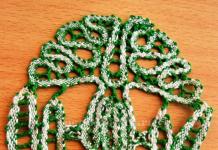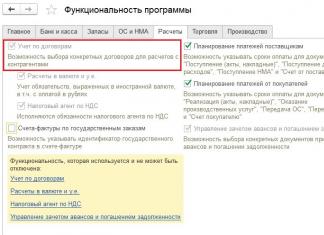In the postpartum period, a woman’s body undergoes a global restructuring. The organs of the reproductive system restore their size and functions, the breasts become engorged, and excess fluid leaves.
The birth of a baby is a crucial moment in the life of every mother. As soon as the placenta has passed, the birth is considered complete. In the postpartum period that follows, two phases are distinguished: early and late. The first lasts 2-4 hours, and the second reaches 2 months. In the postpartum period, a woman’s organs and systems return to a “non-pregnant” state. Sometimes at this time a young mother may worry about unpleasant sensations. However, many changes in a woman’s body after childbirth are quite normal and are associated with its restructuring.
Changes in the reproductive system
In the postpartum period, the organs of the reproductive system undergo major changes. The uterus begins to contract, trying to return to the size it had before pregnancy. Its weight should decrease by about 20-30 times: from 1500 g to 50 g. The fundus of the uterus also lowers, caused by a decrease in its size. It has been established that the reduction process is positively influenced by the following factors:
- breastfeeding;
- special uterine massage;
- lying on your stomach.
If uterine contractions are slow, the young mother is given oxytocin. This hormone affects the intensity of contraction of muscle fibers of the main reproductive organ of a woman. In the body of a young mother, the production of oxytocin occurs when she breastfeeds her newborn. For this reason, in those women who have given up breastfeeding, the reduction in the size of the uterus occurs more slowly.
Immediately after childbirth, the inner surface of the main organ of the female reproductive system is an open wound. It exudes, and the so-called lochia are released. In the first 5 days they are abundant and intensely red due to the high blood content. During the second week, the discharge darkens, its volume decreases, and by the end of the postpartum period it becomes discolored and acquires a mucous consistency.
The vagina and cervix undergo changes. During childbirth, they are often injured, and the doctor has to apply stitches to repair the tears. This leads to deformation of the cervix and slows down the narrowing of the vaginal lumen.
But even if the woman in labor avoided surgical intervention, after a natural birth that does not end in a cesarean section, the cervix changes irreversibly. Instead of conical, it takes on the shape of a cylinder, and the outer pharynx changes from round to slit-like.
It is noteworthy that restoration of the uterus and narrowing of the vaginal lumen ends by the end of the postpartum period, while the cervix takes about a month longer.
As for urination, doctors recommend that young mothers in the first days not wait for the urge, but go to the toilet every 2 hours. Otherwise, the enlarging bladder will put pressure on the uterus, preventing its contraction. It can also cause discomfort. After some time, the tone of the bladder will be restored, and the urge to empty it will return.
Weight changes
When and how to start losing weight after having a baby? This is perhaps the most painful issue for many young mothers. First of all, it is worth noting that during childbirth, a woman’s body loses about 8-10 kg. These include:
- child's weight;
- amniotic fluid (800 g);
- placenta (up to 900 g);
- grown uterus (up to 1500 g).
Gradually, after childbirth, up to 3 liters of excess water is lost: the volume of blood and tissue fluid decreases, swelling subsides.
During pregnancy, as a rule, no more than 2-5 kg are deposited as fat. But to get rid of them, you don’t need to start losing weight immediately after giving birth. With proper nutrition, an active lifestyle and breastfeeding, the body will use up fat deposits within 3 months. If this does not happen, you should not start losing weight until lactation stops. A mother’s diet can deprive the baby of substances necessary for growth and development.
It is recommended to start simple physical exercises no earlier than 6 months after giving birth.
The birth of a child is a happy moment, but it is often overshadowed by the worries of the young mother, who is often anxious about the changes happening to her. And, although there is an opinion that the body strengthens and rejuvenates after childbirth, many women do not stop worrying. Some people want to start losing weight as soon as possible, others are worried about stretch marks or changes in the shape of their breasts. However, is it worth worrying about these little things when we are talking about such a miracle as the beginning of a new life?
The postpartum period begins from the moment of separation of the placenta (exit of the placenta from the uterine cavity) and lasts approximately 2 months. This time is necessary for the woman’s reproductive system and her entire body to return to their normal state. All changes occur sequentially and have their own deadlines.
Beginning of the postpartum period
The birth of a child is a sharp hormonal stress. During the first time after childbirth, the level of hormones in a woman’s body is not yet balanced. All endocrine glands, directly or indirectly related to pregnancy and childbirth, are gradually reorganized to work outside of pregnancy. In parallel with this, the function of lactation is established - the production of milk by the mammary glands and breastfeeding the child.
First of all, the reproductive system—the woman’s genitals and her gonads—undergoes changes. The nervous system changes, forming the dominant of motherhood instead of the already unnecessary dominant of pregnancy. The heart and blood vessels change, as the volume of blood in the vessels decreases to its original value.
Involution of the uterus
To restore a woman’s reproductive function, the body needs to do serious work. From one and a half kilograms, the uterus should shrink to its usual 50-60 g and the size of a fist.
The process of uterine contraction is closely related to the process of breastfeeding: the more actively a woman feeds, the faster the uterus contracts. Every day, the fundus of the uterus drops about a centimeter so that by about 8 weeks after birth it becomes almost normal size. In non-breastfeeding women, the size of the uterus becomes pre-pregnancy, while in nursing women it may even be slightly smaller. The cervical zone, the cervical canal and the internal os zone in the cervix are quickly formed. Approximately 10 days after birth, the cervical canal is fully formed, but the external os of the uterus is passable for the doctor’s finger. The external os closes completely by 3-4 weeks after birth. After childbirth, the cervix of the uterus acquires a slit-like shape, in contrast to nulliparous women with a cylindrical shape.

How quickly uterine involution occurs will depend on a number of factors:
- woman's age;
- woman's condition;
- features of pregnancy and childbirth;
- breast-feeding.
Uterine involution slows down in women over 30 years of age and in some cases:
- birth of the first child;
- after pathology during childbirth and caesarean section;
- in case of violation of the regime in the early postpartum period.
Discharge after childbirth
From the moment the placenta is born, the inner surface of the uterus is a wound zone; its healing occurs in the first 10 days, but complete restoration of the mucosa takes up to 6-8 weeks after birth. As the mucous membrane heals, discharge from the genital tract occurs, which is called lochia. During the process of postpartum recovery, their character changes.
Ovarian changes
The postpartum period significantly changes the functioning of the ovaries. They undergo special kinds of changes. There is a reverse development of the corpus luteum of pregnancy - a special gland that was in the ovary at the site of the egg that was released and gave life to the child. The hormonal function of the ovaries is gradually restored, but the maturation of follicles differs significantly between lactating and non-breastfeeding women. Due to the active release of the hormone prolactin in the first six months, a nursing woman is 96% protected from pregnancy due to suppression. But a non-breastfeeding woman can begin to ovulate already from the 8th week after birth.
From the moment of ovulation, a normal woman is formed.
Author  Alena Paretskaya pediatrician, breastfeeding and nutrition consultant; member of AKEV
Alena Paretskaya pediatrician, breastfeeding and nutrition consultant; member of AKEV
Discussion
Oh, how scary all this is... I haven’t given birth myself, but I’m already interested...
I spent about a year recovering after giving birth until my cycle returned to normal. Until I adapted myself.
Comment on the article "Childbirth is over. What happens to a woman who is breastfeeding and not so much"
the age of the baby, he must be no younger than 1.5 years; state of lactation - have signs of breast involution really been showing for some time? To check this, the mother needs to part with her baby for a day, for example, leaving him with grandma or dad. If after a day there is no painful filling of the breast, it has not become dense and hot, then the woman is ready to wean. If after twelve hours the mother is ready to run to the child so that he...
Weaning a child from the breast, as a rule, seems to mothers to be a very difficult and psychologically painful action. Moreover, there is a public opinion that the older the child, the more difficult it is to wean him from the breast. Therefore, a nursing mother is recommended to stop breastfeeding for up to a year, because already at 1.5 years the child “will not let her go.” However, in reality, weaning that occurs within physiological periods is painless for both mother and child. Lactation is like any other...
Before pregnancy, I never had problems with veins, I always had straight and slender legs. And as soon as I became pregnant, it immediately became difficult to walk in heels, although my belly was not yet visible. Further - worse. My legs began to swell, filled with lead, and hurt at night. At first, the gynecologist said that this was normal for an expectant mother, because the load increases, but when my spider veins began to come out, it became clear that the matter was serious. Then I specifically asked the doctor about how...
At present, the optimal method of managing labor in infected women has not been fully determined. To make a decision, the doctor needs to know the results of a comprehensive virological study. Natural childbirth includes a whole range of measures aimed at adequate pain relief, prevention of fetal hypoxia and early rupture of amniotic fluid, reducing injuries to the birth canal of the mother and the baby’s skin. Only if all preventive measures are followed does...
Psychologist for pregnant women Expecting a child is a wonderful time for a woman, but in addition to joy, a woman can become anxious, fear of childbirth, worry about the baby. All the worries that a woman has during pregnancy can negatively affect both the birth itself and the health of the baby. A psychologist for pregnant women is very necessary. You and I know very well that when a woman is pregnant, her character becomes heavier...
In the maternity hospital of Moscow Clinical Hospital No. 15 named after Filatov, 62-year-old Muscovite Galina Shubenina gave birth to a daughter. The birth took place via cesarean section, which was performed by experienced obstetrician-gynecologist Nestor Meskhi. An elderly mother, Galina, became pregnant using the IVF procedure, as reported by the Vek information service. According to doctors, the pregnancy, despite the age of the woman in labor, was going well. The girl appeared in the family of Galina and Alexander, for them this is the first child together. Weight...
You went through your pregnancy so steadfastly, and you endured toxicosis easily. All the torment is long behind us, communication with the child lies ahead. Wonderful mommy, I congratulate you, I wish you and your dear child health. You also have great strength not to fall off your feet, but to be glad to hear the babble of a child and his smile. © Congratulations to a mother with a newborn Carrying a child under your heart is an honor, which, unfortunately, not everyone has. You were tied up with your child for nine months, and now you look at him, having opened...
Pregnancy at 37-40 weeks is full-term and labor can begin at any time. And there are three main signs that indicate their imminent approach. Removal of the mucus plug. It can occur 2 weeks before birth, but most often within 24 hours. The plug looks like a small lump of pinkish, brown or yellowish mucus. Often the cork comes off not entirely, but in parts. During pregnancy, it closes the entrance to the cervical canal, protecting the amniotic sac from...
This is the phrase that can often be heard from women who have learned about a desired pregnancy. To the question - Who are we? The answer follows - My husband and I! Dear mothers, only you are pregnant, not your husbands. No matter how difficult it may be, you will have to bear, give birth and breastfeed a child. Where is the husband in this whole story (pregnancy)? You ask. If I’m already a mother, since I already have a child, does that mean he’s already a dad? But no. He will become a dad a little later, not even at the moment of birth (although formally this is so)...
It is better to make a list of things to take to the maternity hospital long before the birth. And not just compose, but prepare, plus collect everything you need. In addition, another list of things to take to the maternity hospital needs to be made for your husband (mother, grandmother, friend). If you have several close people, so much the better. Let everyone know in advance what you would like them to serve. Childbirth is a responsible process for the woman in labor. But she understands what happens to her during labor, the birth of a child and after. It is no easier morally for those who love...
Is everyone happy??? Almost all of the women here are angry, I don’t understand why, I wanted to share my story, but they dumped a lot of their negativity on me... and you also reproach me for being an energy vampire???? look at yourself!!! They attacked me with insults and convinced others that I was a troll.
Childbirth is over. What happens to a woman who is breastfeeding and not so much. After a cesarean section, the restoration of the menstrual cycle occurs in the same way as after a natural birth, and depends on the method of feeding.
I'm a terrible scribbler, so I write as best I can)) All night, from the 26th to the 27th, I woke up from pain in the lower abdomen, but since I had been “giving birth” for two weeks in this way, I didn’t attach any importance and fell asleep safely until the next time... at 6:44 I began to notice a strange regularity, began to detect contractions, it turned out once every 10 minutes... I collected a bag with documents and water, went to the shower, called my mother, agreed that we would go, and she would come when she was ready, in the end we met at the door ...Woke me up...
39 weeks. Childbirth day - continuation. 16:45. I'm being processed. Damn it, I went nuts. I’m having contractions, but here you go, damn it, sit and answer questions, it’s already a system... they don’t think with their heads at all. They also asked “how are the contractions going now?”, I said, well, yes, they are already such decent contractions!!! And to me: “okay, today you will give birth before 23:00.” I say “I hope, I want today, well, maximum on the 22nd until 3 am.” They were surprised and started asking why. Well, I quickly explained that the stars are well located. You were probably surprised...
Time flies unnoticed, and yesterday’s helpless baby is today a completely independent toddler. And sad as it is to realize, his need for his mother is becoming a little less. This primarily concerns, of course, breastfeeding. When the child is about one and a half to two years old, the mother is faced with the question of how to wean the baby from the breast. In order for this process to be as painless as possible, the mother needs to know several physical and psychological...
Recovery after childbirth is a very difficult process. Just imagine what has happened to the female body and organism over the past 9 months and the very process of bringing a baby into the world. Although they say that pregnancy and childbirth make a woman beautiful and her body rejuvenates. To some extent, this is true, but of course there are also negative consequences. A woman’s body will take a long time to recover after childbirth. And the body is already worn out, and there is still a long period of lactation ahead, during...
Breast milk is the cure for all diseases. This is not only nutrition for the child, but also the formation of emotional attachment between mother and baby. With mother's milk, enzymes and antibodies are transferred to the child, protecting him from infections. Only eight women out of a hundred cannot breastfeed for medical reasons. But it happens that a woman herself does not want to feed because she is afraid of gaining weight. But this can happen if mom eats for two. But doing so is unnecessary and even harmful. Better...
Finally, these long 9 months of pleasant waiting are over. The baby snores sweetly, fed, surrounded by warmth and affection. Mental balance was restored after childbirth, but physical balance... some were luckier, and the figure after childbirth almost did not change, the muscles just lost a little tone. Some were less fortunate. Well, that means you just need to work on yourself a little more. The main thing is not to get upset, not to despair, to tune in only to a positive result, and...
And it flew away... 4:30 They shake me by the leg and wave my hands with the word “That’s it.” I still don’t understand anything, because I’m dying to sleep after a sleepless night of wallpapering. Somehow I wake up. Alenka explains to me that the mucus plug has finally come off and she is having contractions. In general, the fact that the plug has finally come off is a harbinger, but a few days may still pass before the birth. And the contractions may well be trial ones (by the way, we already sat with such trial ones at the dacha for an hour with...
One of the most common myths among young mothers is the inability to get pregnant while breastfeeding. This misconception leads to a huge number of unplanned pregnancies within 2 years after the birth of the first child: 10% of Russian women have an abortion in the first year after giving birth! The opinion about the impossibility of getting pregnant while breastfeeding really has its grounds, however, it corresponds to reality only during the first 6 months after...
The birth of a child is undoubtedly one of the happiest moments in the life of every woman. Throughout pregnancy, expectant mothers do not even think about all the possible difficulties of the postpartum period. Difficulties often arise not only in connection with caring for the child, but also with the young mother’s own body. What problems a woman may experience after childbirth, and how to prevent the development of postpartum complications.
Changes in the body
Throughout pregnancy, a woman's body changes. The uterus enlarges, certain hormones begin to be produced, and the mammary glands prepare for lactation. Immediately after the birth of a child, reverse processes are launched in the young mother’s body, which restore the size of the uterus, normalize hormonal levels and ensure the restoration of all organs and systems to their previous state. Along with recovery, the body activates new functions necessary for milk production and the onset of lactation.
The main indicator of a woman’s health in the postpartum period is the uterus. If a woman has no pathologies or postpartum complications, the uterus returns to its previous size within 8 weeks after birth. During this period, the young mother may feel nagging pain in the lower abdomen, in the first days there is heavy bleeding, weakness and dizziness.
What to pay attention to
First of all, a young mother needs to monitor the amount of postpartum discharge. They should be profusely bloody with the presence of clots in the first days. Next, the amount of discharge should gradually decrease and become pale. If your bleeding suddenly stops, consult a doctor immediately. Also, consultation with a specialist will be required if the amount of discharge does not decrease after 2-3 days.
If you have stitches, they also need to be carefully monitored. Follow all doctor's recommendations for treating sutures, do not lift heavy objects, and do not violate the prescribed regimen. See your doctor immediately if:
- The suture turned red after the caesarean section.
- There was redness and swelling around the stitch.
- There is pus coming out of the suture.
- Increased pain appeared.
Also constantly monitor the condition of your breasts. If lumps or lumps form, consult a doctor immediately. It is important to put your baby to the breast correctly. Proper feeding will ensure the health of not only the mammary glands, but also the nipples. Often young mothers face the problem of cracked nipples. If you experience pain while breastfeeding and have cracked nipples, see a lactation consultant immediately.
Very often, even in the last months of pregnancy, a young mother may encounter a disease such as hemorrhoids. Unfortunately, after childbirth, the disease can worsen, causing pain and suffering to the woman. To treat hemorrhoids, you can use suppositories and special ointments.
Avoid developing constipation, as this will further aggravate hemorrhoids.
To prevent inflammation, you can wash the perineum with cool water after visiting the toilet. In acute forms of the disease, consult a doctor.
State of mind
A woman’s health after childbirth depends not only on her physical condition, but also on her mental mood. Often after childbirth, a woman may feel a loss of strength, apathy and sadness. This phenomenon is quite normal. In the first days after the birth of a child, hormonal changes occur in a woman’s body, which causes such conditions. Ideally, a new mother's mood should improve a week after giving birth. However, the mother’s health does not always return to normal quickly. Mild postpartum depression is acceptable in the first 6 months after the baby is born. During this time, the mother's hormonal levels and general well-being should return to normal.
If, six months after giving birth, the mother has not recovered and is not happy with caring for the child, one may suspect the development of a complicated form of postpartum depression. In this case, it is necessary to urgently contact a specialist, because it is very difficult to cope with this condition on your own.
Today, psychologists recommend that young mothers monitor their psychological state from the first days. Negative emotions should be eliminated as much as possible. Try not to limit yourself in communicating with friends and relatives, accept any help from family and friends. To improve your mood, you need to walk outdoors more often, play sports and eat right.
Intimate life
Often after childbirth, a woman may be faced with a reluctance to have intimacy with her husband. This causes frequent scandals and mutual reproaches between spouses. You need to understand that the body of a healthy young woman needs sexual relations just like the body of a healthy man. If, after the allotted time of rest after childbirth, you do not feel the desire for intimacy, then some kind of failure has occurred. Most often, a decrease in libido occurs as a result of hormonal imbalance.
If you feel that there have been changes in your intimate life with your husband, and these changes are far from for the better, you need to consult a doctor. The doctor will help you find out the reason for the lack of sexual desire, and very soon you will again feel the joy of intimate life.
Now there are three of us
Every young family with the birth of a child undergoes significant changes in their usual way of life. Now you can no longer go where you want and do what you want. A child is a big responsibility. You need to prepare to become parents during pregnancy. A woman must be mentally prepared to change her usual way of life. A man must also understand that now there is a person in their family who requires a lot of attention, strength and care.
The unpreparedness of young parents for the birth of a baby can result in constant scandals, misunderstandings, and loss of love and respect.
Every woman may face a number of problems in the postpartum period. However, all difficulties and difficulties are completely solvable. There is no need to isolate yourself. Go to your family, friends and specialists for help. Any mental or physical ailment must be stopped at the very beginning, without giving it the opportunity to develop into a serious illness. The main thing is not to forget that a child is a piece of your love with your spouse, and it should only strengthen your relationship.
Pregnancy and childbirth trigger multiple processes in the female body, with the development of which the body undergoes metamorphosis after childbirth. The body spends 6-8 weeks restoring organs and systems. This period in a woman's life is called postpartum. All organs begin to function as before pregnancy, with the exception of the hormonal system and mammary glands; they will work in a special mode all the time the woman is breastfeeding.
What happens to the uterus after childbirth
As soon as the placenta leaves, the uterus shrinks significantly and forms a spherical shape. On the first day after giving birth she weighs about 1 kg, after 10 days she reduces her weight to 500 g, and after two months she already looks and weighs the same as before pregnancy - approximately 50 g.The return to the original state of the uterus is noticeable for the woman: she periodically feels nagging pain, which becomes most pronounced during breastfeeding. During lactation, and especially when feeding the baby, the hormone oxytocin is intensively produced, it causes contractions of the smooth muscle tissue of the uterus, which causes its painful spasms. Sometimes a series of oxytocin injections or a special massage is required to quickly restore the uterus.
The cervix returns to its original state somewhat more slowly, and is finally restored approximately three months after birth. It does not take its previous shape: instead of conical, it takes the shape of a cylinder, and the previously round shape of the outer pharynx becomes slit-like. This does not apply to women who have had a caesarean section. Changes in the cervix are noticeable only to the gynecologist; they do not play any role in the woman’s health.
What happens to the menstrual cycle after childbirth
At the end of childbirth, bloody discharge from the genital tract - lochia - begins. They are more abundant than normal menstruation and last approximately 6-8 weeks, becoming transparent towards the end.During the first weeks, while all the birth canals are open to infections, you should especially carefully monitor the cleanliness of the genitals. During this period, it is recommended to use special pads that are changed every two hours.
Each woman's menstrual cycle begins at different times. Rather, menstruation resumes in women who have finished breastfeeding. Menstruation soon becomes regular, and for many women it is no longer as painful as before pregnancy.
What happens to the vagina after childbirth
The size of the vagina after childbirth decreases over time, and by the end of the second month after the birth of the child, it will approximately return to its previous size. This occurs by restoring the tone of the vaginal muscles, which can be facilitated by special exercises that train the pelvic floor muscles.Doctors recommend resuming sexual activity no earlier than after one and a half to two months. This period is necessary for all organs of the female reproductive system to recover. If there are ruptures of the cervix, vagina or perineum, the time of sexual abstinence is discussed with the doctor individually.
Regardless of the timing of the first postpartum menstruation, ovulation, and, consequently, fertilization, can occur unnoticed by the woman. Therefore, it is necessary to take care of contraception.
With lactational amenorrhea, pregnancy will not occur if:
- The child is not older than six months.
- No more than three hours pass between breastfeedings.
- The baby is fed at his first request.
- You also feed your baby at night.
Cardiovascular and circulatory systems
Blood volume, which increased during pregnancy, returns to its original volume within 5-7 days. During this time, frequent heart contractions may occur.Childbirth is always associated with blood loss; after childbirth, the circulatory system produces an increased number of platelets for better blood clotting.
If a woman has had a cesarean section, she is under special surveillance to avoid blockage of blood vessels - thromboembolism, and she is prescribed special medications.
What happens to the genitourinary system after childbirth
Since the tone of the pelvic floor muscles is reduced, at first a woman sometimes does not feel the urge to urinate. This condition can be triggered by prolonged labor.At this time, you should not allow the bladder to overflow, so as not to interfere with uterine contractions and discharge of lochia and not cause an inflammatory process.
Digestive tract
Low overall tone of the pelvic muscles can cause constipation. A warm shower that relieves cramps, abdominal massage and a special diet rich in fiber helps combat the problem. During the first days, you can use laxative suppositories, but you should not abuse them.Another problem could be hemorrhoids. If hemorrhoidal nodules do not disappear and cause pain, it is worth visiting a proctologist.
What happens to the mammary glands after childbirth
The female breast undergoes the greatest metamorphosis even during pregnancy. First, she begins to secrete colostrum - a valuable liquid that protects the baby from harmful bacteria and satisfies his need for nutrients at this time. The milk “comes” in about three days. To establish stable lactation, put your baby to your breast on demand, this will save you from pumping and help you establish closer contact with your baby.Complications
The body may require medical attention after childbirth. Fever and pain in the abdomen are a reason for an early visit to the doctor. This is how endometritis can begin - an inflammatory process in the uterus. The doctor will do an ultrasound and prescribe an antibiotic.Lactostasis is a lump in the mammary glands that can result from stagnation of milk in the breast or improper attachment of the baby to the breast. If your temperature rises, do not delay calling a doctor. After the examination, he will prescribe physiotherapeutic procedures and... possibly an antibiotic. Purulent mastitis will require surgical intervention.
After the process of bearing the baby, the internal organs need to be restored. Mothers experience stress and significant changes occur in their bodies. The fetus, which developed, affected the location of many organs and disrupted the usual mode of operation. The period of establishing the functioning of all functions is called “involution” and implies a reverse development - the restoration of the usual state of health.
Renewal of the body does not happen immediately; it requires a certain period of time. This period lasts from 6 to 8 weeks. The mammary glands and hormonal system experience changes for even longer: during lactation. It is not easy for a woman after childbirth; during this period there is no stability, many organs suffer, and the condition of the woman in labor leaves much to be desired.
Immediately every woman feels weakened and empty, as great changes have taken place in her. Mom feels very tired and requires proper rest. Immediately the female body is stressed, the appetite is somewhat reduced or completely absent. There is visible retention of stool and urination. If necessary, the healthcare professional may prescribe a catheter. You shouldn’t focus on your appearance: a pale face, sleepy eyes and a tired but happy look. This is how the current mother changes and looks like.
Extract
The treating diagnostician must visit the patient daily. An obstetrician-gynecologist usually pays attention to the position of the chest and uterus, monitors the number and nature of lochia, and also evaluates blood pressure and pulse. If the client has no visible problems or complications, the observing doctors will discharge her home 4-7 days after the baby is born.
Internal organs
Uterus
Before and after giving birth, her weight differs significantly. The uterus weighs 1 kg, after seven days - half a kilogram, and at the end of the renewal period in the woman’s body, the weight is the usual 50 g. The mother herself can feel this during the feeding process: a hormone called “oxytocin” is released. At this moment, the uterus contracts, and aching and nagging pain appears in the abdominal area. To make the contraction process happen faster, the treating doctor has the right to prescribe oxytocin injections and (for those who are against it) a special gentle massage.
Cervix
The return to the usual position is very slow. The third month, after the appearance of the baby, completes the end of formation. The round shape that was before is not completely restored. The cone shape changes to an oblong shape slowly and gradually, without having any effect on health.

Lochia
Lochia, detected after delivery, is a bloody discharge from the vagina that can be confused with menstruation. But that's not true. Lochia comes out in a more abundant volume than menstrual periods and is characterized by a long duration, and is characterized by a specific, unpleasant odor. The duration of this period is 6 weeks, after the discharge will be normal. After changes occur to the body and the female body, you should adhere to certain rules of care: regularly changing hygiene items and constant cleanliness will help you get through a difficult moment.
To improve the quality of outflow, you need to lie on your stomach, applying a heating pad with crushed ice. Lochia has a rather variable nature of these secretions:
- the first five days are bloody and profuse;
- from the sixth to the tenth day - brown and abundant;
- from eleventh to fifteenth - yellow, moderate;
- from the sixteenth to the twentieth - white and scanty;
- after - transparent.
Critical days
The return of menstruation begins in different ways: for those who did not breastfeed, the cycle improves after a month, for those who breastfed the baby - after six months. Everyone experiences different sensations after an individual birth, so the timing is approximate. After the birth of the baby, periods will become less painful and longer than before, as well as regular. The threshold of pain and sensitivity will become lower. After such an experience, most people experience positive stress, after which they become prettier and younger.
Vagina
What does the intimate area look like and what happens to it after? The volume tends to decrease, but will not return to its previous size. After some time, the muscles return to normal as much as possible. The volume decreases quite gradually. Despite the fact that this zone does not return exactly to its previous size, due to the restoration of muscle tone, after some time the clearance becomes as close as possible to what it was. Experts recommend starting sexual activity no earlier than 2 months after the baby is born.
Only after two years is the girl fully ready for the next pregnancy.
Bladder
At first, the patient will not feel the urge to go to the toilet due to decreased tone. If the contractions were long, this feeling lasts a long time. To protect yourself from complications, you should have a bowel movement every two hours. If you ignore this, there is a chance of getting complications of various kinds.

The cardiovascular system
There is a rapid heartbeat and the volume of circulating blood increases. A woman who has had a caesarean section should monitor this especially closely. There is a possibility of developing a complication - thromboembolism (blood clots form and the lumen of the vessels closes).
External features
Breast
You can notice what your cleavage will look like immediately after childbirth even during pregnancy. The mammary glands undergo the most significant visible metamorphosis. Transformations occur during pregnancy to prepare the breasts for milk production: the volume of the cleavage increases in size by 2-3 times.
At first, colostrum will be released, which has the unique ability to protect the baby from harmful bacteria. Colostrum has a yellowish color and a thick consistency. Milk tends to be produced in the first seven days after the baby is born. Before and after feeding, you should rinse your nipples with warm water.
The process of breastfeeding allows mother and baby to establish close contact forever.
Stomach
The stomach is the most susceptible to visible changes. The entire burden falls on him. Few people have the courage to boast of beautiful and toned abs. It’s easy to guess what happens after childbirth to the female body, namely the tummy: everything stretches, stretch marks and a dark line appear.
What should you do to quickly forget an unpleasant sight? The stomach, wrinkled like an apple, should be lubricated with tightening cream and body wraps done. The effect of cosmetic procedures can be accelerated by regular exercise (at least 90 days) and a proper diet.
To tighten up everything that is sagging, at first it will be enough to take daily walks with the baby and a healthy menu. If there is a lot of sagging in some places, you can purchase a bandage. It promotes tightening and prevents new stretch marks.

Hair
During gestation and feeding, all the nutrients that the mother receives go to the baby. The lack of essential vitamins and minerals has a detrimental effect on your appearance. New mothers often face:
- hair loss and brittleness;
- the appearance of gray strands;
- loss of shine in curls;
- brittle nails;
- dryness of the epidermis;
- fatigue.
This does not mean that the mother is getting old. A woman's health and appearance also require care after childbirth. Masks, rinsing with decoctions, drinking plenty of water and food with vitamin B2, and a warming massage will help solve the problem quickly.
Flashes of pain
When pain begins, it is difficult to understand what can happen to the female body during the postpartum period. There are a number of standard reasons, including: gestation for quite a long time, development of the fetus inside. Areas where pain occurs:
- Mammary gland.
- Kidneys.
- Back and lower back.
- Pelvic area.
- Anus and colon.
Unpleasant sensations are common symptoms. But, if there are complications or exacerbations, you should immediately consult a specialist.
Meals for the first time
- raw vegetables;
- all types of cabbage;
- grapes and citrus fruits;
- legumes4
- everything floury, sweet, fried and fatty;
- watermelon and melon;
- red meat and pork.

It will take 20-30 days to get used to the diet until the baby’s stomach function is completely normal. Once finished, you can add other foods little by little.
Conclusion
What happens afterwards in such a natural process for a girl can only be felt by those who have experienced it. Not everyone experiences the above problems and this is normal. The body takes time to accept the transformation. What happens to the female body after childbirth?
At first, mommy will feel unwell, but over time she will notice how rejuvenated and prettier she becomes. Nails and hair will look healthy, movements will become smooth, the figure will become rounded and attractive, and the most important reason for happiness will be the appearance of a baby.


























